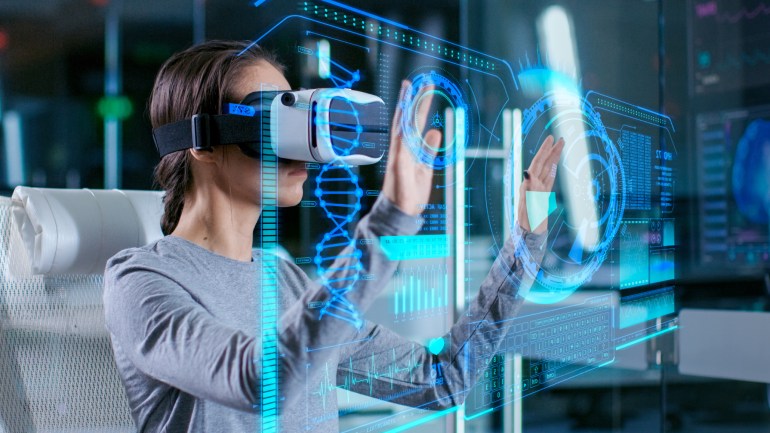 Virtual Reality (VR) and Augmented Reality (AR) have become an integral part of the multimedia landscape in recent years. The underlying technologies have reached a high level of maturity and the spread of the necessary end devices is being pushed further by technical progress.
Virtual Reality (VR) and Augmented Reality (AR) have become an integral part of the multimedia landscape in recent years. The underlying technologies have reached a high level of maturity and the spread of the necessary end devices is being pushed further by technical progress.
The upward trend in technology over the last few years remains unabated, as AR and VR have long ceased to be designed exclusively for professional use. The devices and corresponding applications have long since spread to the consumer sector, especially the games and entertainment industry.
In the professional environment, more and more areas of application have recently emerged, and the application hurdles in terms of costs, integration and acceptance are steadily falling; hence, application scenarios in various economic sectors are becoming more and more attractive.
VR and AR are now being used in various sectors and industries, be it in vehicle construction, in the implementation of construction projects or in the operating room of hospitals. Nevertheless, there is still great uncertainty as to whether an investment in these technologies is worthwhile – and what the advantages are.
The new technologies can be used, for example, to simplify work processes and reduce costs (e.g., for maintenance). The topics of training and further education are also positively influenced by the new technology. It is therefore worth taking a closer look at the topic of AR/VR.
Despite the ever-increasing spread of the technologies, there is still a great deal of uncertainty regarding their specific use in companies. There are many reasons for this, such as the complexity of the technologies, the large number of technology providers and the possible areas of application.
In general, it is worth first considering the goals and purposes associated with the use of VR/AR, since different philosophies are already emerging in the most diverse areas as to what should be achieved with the use of the respective technology.
In general, three areas of application can be distinguished – collaboration, assistance and learning – which follow fundamentally different philosophies and depend on the respective scenarios – so, there is no right technology or right approach.
For example, let's look at learning solutions since nowadays people need to learn something new more and more often and even expect that person to have a thorough knowledge of a topic to be considered good. For example, a pilot of a passenger plane must constantly practice rare emergency situations, where VR solutions could be an option in addition to expensive flight simulators. The situation is similar in the medical field, where the skill of the doctor is important, and it is not enough if he only carries out instructions from a machine.
However, there is another philosophy according to which a person can do certain things but does not necessarily have to be able to do them ad hoc. This applies, e.g., for less frequent maintenance or situations in which no reflexive action is required to ensure that there is no danger to life and limb. The limited storage capacity of our brain doesn’t need to be overloaded with useless knowledge, but rather receive special information from the machine on demand and that without errors. Whether the assistance comes from the machine or via a remote colleague who has the necessary special information ready for the maintenance technician is of secondary importance. What’s important is to make a general distinction, and then augmented or virtual reality can open up new avenues for maintenance and repairs.
Collaboration applications in AR and VR go one step further by shifting the focus away from the individual towards “collectively developing something.” Here, the special appeal lies in overcoming the limits of space and connecting from different locations worldwide without having to travel halfway around the world. The pandemic has shown us every day what is actually feasible with such collaboration opportunities. We are advancing into areas we previously thought were only possible to experience live and in color on site. Technologies such as AR and especially VR are making these boundaries disappear and seem to raise the previously unthinkable into the realm of the suddenly possible, such as, e.g., having experts from several continents work together on a problem.
The digital association Bitkom published a comprehensive guide that touched on these three philosophies impacting the potential of AR and VR, and according to Dr. Sebastian Klöß, Head of Consumer Technology & AR/VR at Bitkom, the use is particularly worthwhile for business, which is why we will be presenting scenarios for using virtual reality in marketing next week.
By Daniela La Marca


